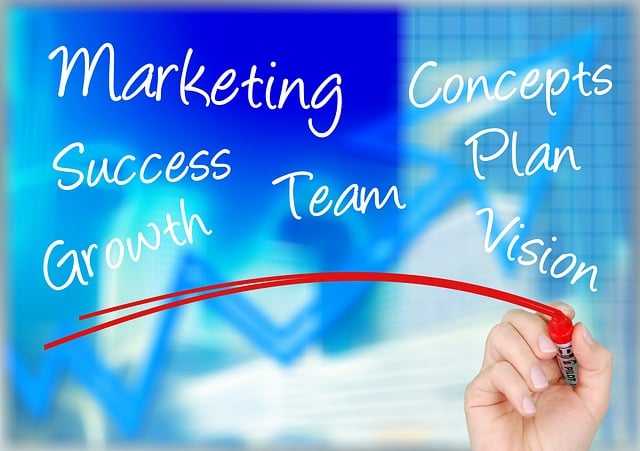AI landscaping, combined with smart lighting control systems, revolutionizes outdoor space management. By utilizing AI, these systems optimize lighting efficiency, enhance safety, and create visually appealing environments through dynamic adjustments based on time, weather, and human activity. Furthermore, the integration of AI in state-by-state labor regulation mapping empowers businesses to navigate complex legal landscapes efficiently, ensuring compliance with local laws and standards. This technology streamlines data analysis from government databases, identifies patterns, and offers insights into labor practices across different jurisdictions, facilitating informed strategic decisions. Despite challenges like data privacy concerns and high computational requirements, AI state-by-state labor regulation mapping ensures responsible data handling and accessibility features. As AI advances, smart lighting promises sophisticated automation and seamless integration with IoT.
“Explore the transformative power of AI in the realm of smart lighting control systems. This article delves into the innovative concept of AI landscaping, offering a comprehensive overview of its potential. We examine how AI facilitates state-by-state labor regulation mapping, optimizing lighting efficiency and safety.
From benefits like energy cost reduction to challenges such as data privacy concerns, we uncover the intricacies of AI integration. Get ready to discover how this technology is revolutionizing urban landscapes, setting the stage for a brighter future.”
- Understanding AI Landscaping and Smart Lighting Control Systems
- The Role of AI in State-by-State Labor Regulation Mapping
- Benefits, Challenges, and Future Prospects of AI Integration in Lighting Systems
Understanding AI Landscaping and Smart Lighting Control Systems

AI landscaping, combined with smart lighting control systems, represents a revolutionary advancement in outdoor space management. This technology harnesses artificial intelligence to optimize lighting efficiency, enhance safety, and create aesthetically pleasing environments. By analyzing various factors such as time of day, weather conditions, and human activity, AI-powered systems can dynamically adjust lighting intensity and distribution.
The integration of AI in landscaping goes beyond simple automation. It involves sophisticated state-by-state labor regulation mapping, ensuring lighting adjustments are not only energy-efficient but also compliant with local labor laws and safety standards. This comprehensive approach allows for the creation of intelligent landscapes that adapt to changing needs while promoting sustainability and compliance, transforming outdoor spaces into vibrant, safe, and well-regulated environments.
The Role of AI in State-by-State Labor Regulation Mapping

The integration of AI in state-by-state labor regulation mapping is transforming how businesses navigate complex legal landscapes. By leveraging machine learning algorithms, companies can now efficiently analyze and interpret labor laws across different jurisdictions. This technology identifies key regulations, tracks changes in legislation, and provides real-time updates, ensuring compliance with local labor standards.
AI streamlines the process of mapping these regulations by quickly processing vast amounts of data from various sources, including government databases and legal documents. It can identify patterns, highlight inconsistencies, and offer insights into how different states approach labor practices. This level of detail empowers businesses to make informed strategic decisions when expanding operations or managing remote workforces, thereby reducing the risk of non-compliance and associated penalties.
Benefits, Challenges, and Future Prospects of AI Integration in Lighting Systems

The integration of AI into smart lighting control systems offers numerous advantages, revolutionizing how we interact with and manage lighting environments. One significant benefit is enhanced energy efficiency; AI algorithms can learn patterns of occupancy and natural light availability, optimizing lighting output to reduce power consumption. This results in cost savings and a reduced environmental impact, aligning perfectly with global sustainability goals. Additionally, AI-powered systems provide unparalleled customization and control, allowing users to personalize lighting scenarios for various moods, activities, and accessibility needs. Voice commands and mobile applications make these adjustments intuitive and readily accessible.
Despite these advantages, challenges exist in implementing AI landscaping smart lighting. Data privacy and security concerns are paramount; lighting systems collect vast amounts of data, including user habits and personal preferences, which must be secured against potential breaches. Furthermore, the development and deployment of AI models require significant computational resources and expertise, posing a barrier to entry for smaller businesses or municipalities with limited IT capabilities. The AI state-by-state labor regulation mapping is crucial in addressing these challenges, as it provides guidelines for data handling, privacy protection, and responsible AI integration within lighting systems. As technology advances, the future of AI-driven smart lighting looks promising, with potential for even more sophisticated automation, improved accessibility features, and seamless integration into the Internet of Things (IoT).
AI is transforming landscaping and lighting control systems, offering enhanced efficiency and customization. The integration of AI technology, particularly in state-by-state labor regulation mapping, promises a future where lighting can be intelligently adjusted based on real-time data. While benefits include energy savings and improved user experiences, challenges like initial implementation costs and privacy concerns require careful consideration. As AI continues to evolve, its role in landscaping will likely become even more prominent, shaping the way we interact with our surroundings and driving sustainable innovations.
